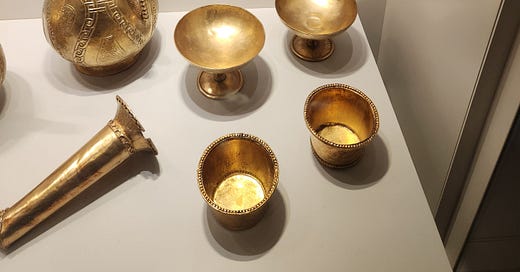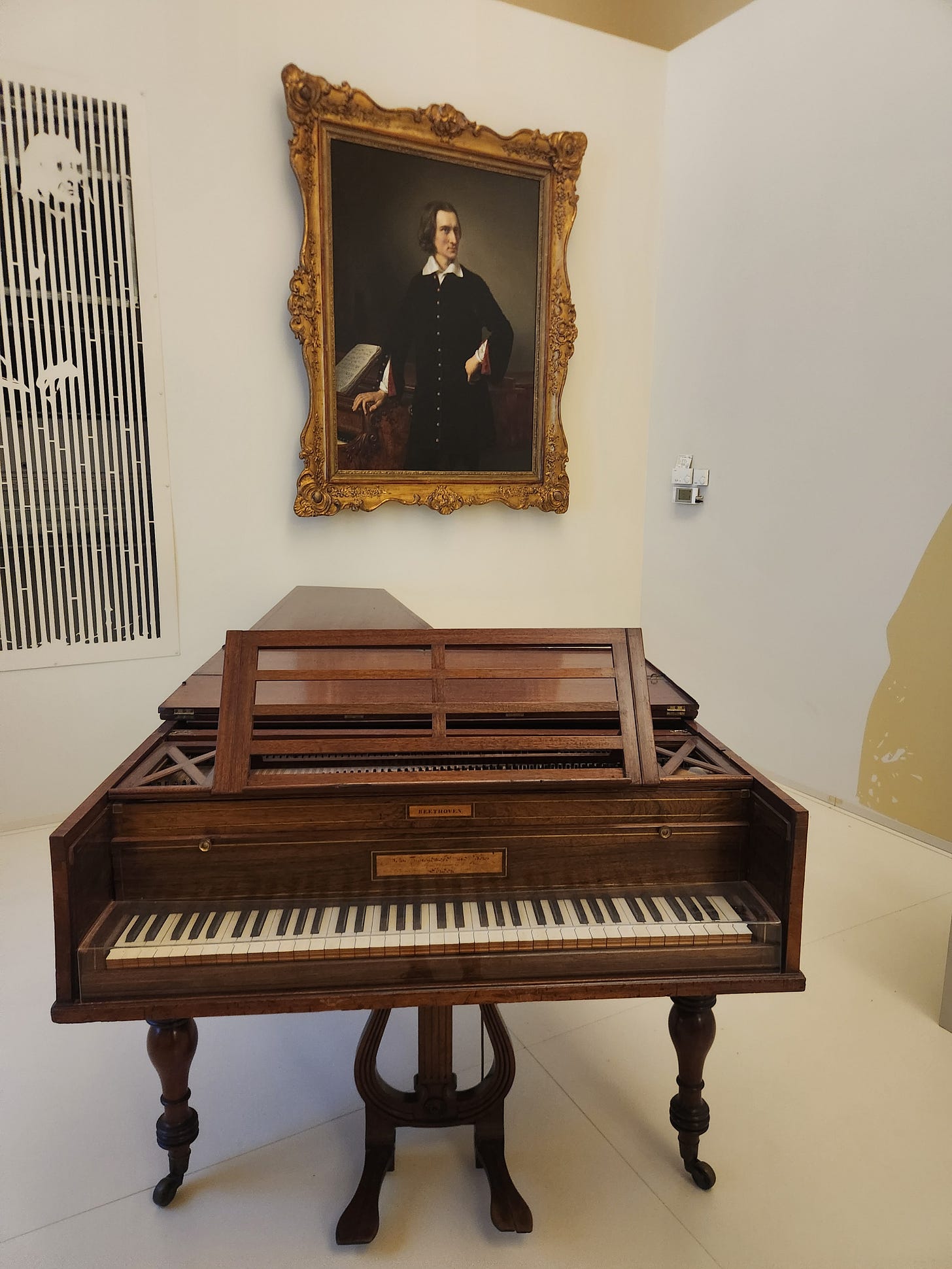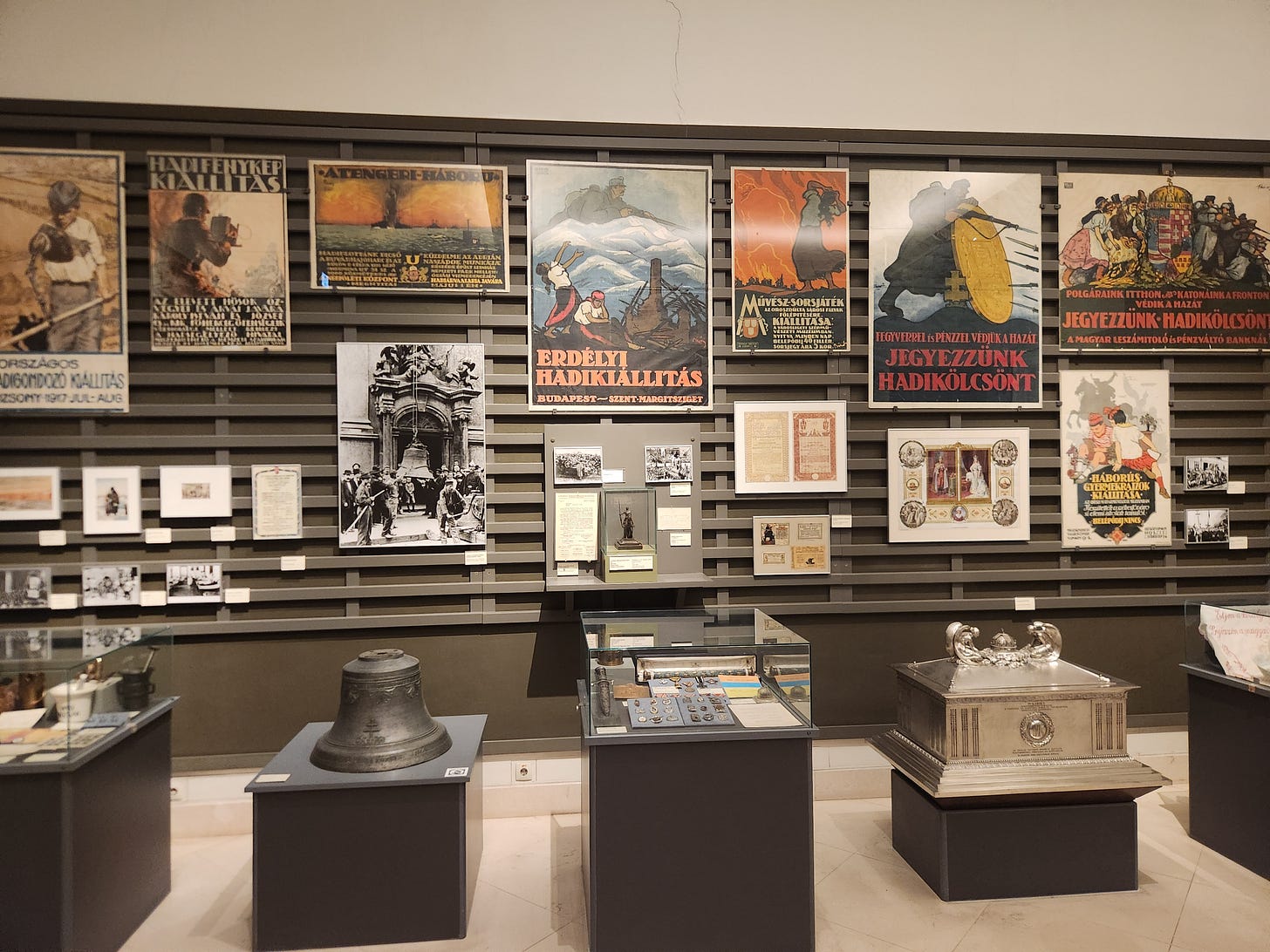Budapest and the National Magyar Museum pt 1
Welcome back to my blog after, I would guess, a three-year hiatus. I stopped because I was having too much fun in the fiestas of Spain, and those late nights really limited my drive to write about my visits to museums and monuments. I have been traveling for about a month in Europe, and after visiting Budapest and the National History Museum, I felt the renewed drive to share what I'm seeing. This time, however, it will be a more bite-sized mini blog, so here it goes.
(A selection of Avar treasures)
I've spent three nights in Budapest, and I'm content with this decision as it allowed me to explore the city without haste. On my last day, I was able to visit the National Hungarian Museum. This is the classic European history museum. The basement is a well-done collection of Roman funeral goods and marbles. I'll go into this in part two. Then, from the ground level, the museum covers prehistory, the development of the Celtic culture, all the way through the fall of communism. I was impressed especially by the period from the Bronze Age to the Magyar conquest of the Pannonia plains of modern Hungary. For those who aren't scholars of medieval Hungarian history, the Hungarians or Magyars were a nomadic pagan horse archer people like the Huns or Mongols. There is no clear homeland of the Magyars, but their language is only closely related to Finnish and a variety of Siberian Ugric languages, so based on this, at some point they came from the Russian steppe.
(The Liszt/Beethoven Piano!)
The museum has a variety of interesting medieval artifacts, and they have the piano of Liszt, which was originally Beethoven's—quite the unique item. The gallery on the revolution of 1848 was especially interesting, with the commentary of the museum obviously being very pro-revolutionary.
(The “massive” WW1 exhibit)
However, to me, the most interesting period was the galleries from the First World War to the 1956 Hungarian Revolution. It was amazing how little space was devoted to the First World War. A period that devastated Hungary and caused a massive loss of its male population one would imagine would have a significant amount of space and artifacts devoted to it. However, the gallery is essentially a few firearms and a couple of posters. It is clear to the visitor that this is not considered a highlight by the curators of the museum.
The next gallery is essentially a space devoted to complaining about the settlement of Versailles. To be fair to the Hungarians, they didn't have full autonomy of foreign affairs, so the complete dismemberment of the Hapsburg Kingdom of Hungary was quite punitive. That being said, the Hungarians were notoriously despotic to minority ethnicities in their segment of the Austro-Hungarian empire, essentially trying to Magyarize, i.e., destroy the ethnic and linguistic identity of the Romanis, Czechs, Slovenes, Ukrainians, and other minority groups. With the exception of perhaps the Jewish community of Hungary, there was very little love lost between the minority groups and the Hungarian portion of the dual monarchy. This museum follows the classical national history museum trend of loudly complaining and pushing irredentist grievances with no self-awareness or criticism. I wouldn't be surprised if every neighboring country has a wing devoted to the depredations and oppressions of the Hungarians. In any case national history is always contested and to expect the National Magyar Museum to be introspective and to ruminate on the failures of the Hungarian state post first world war is perhaps a bit optimistic. Anyways the next segment I'll talk about WW2 the Nazi takeover and then the rise of Communism in Hungary. See you then!





